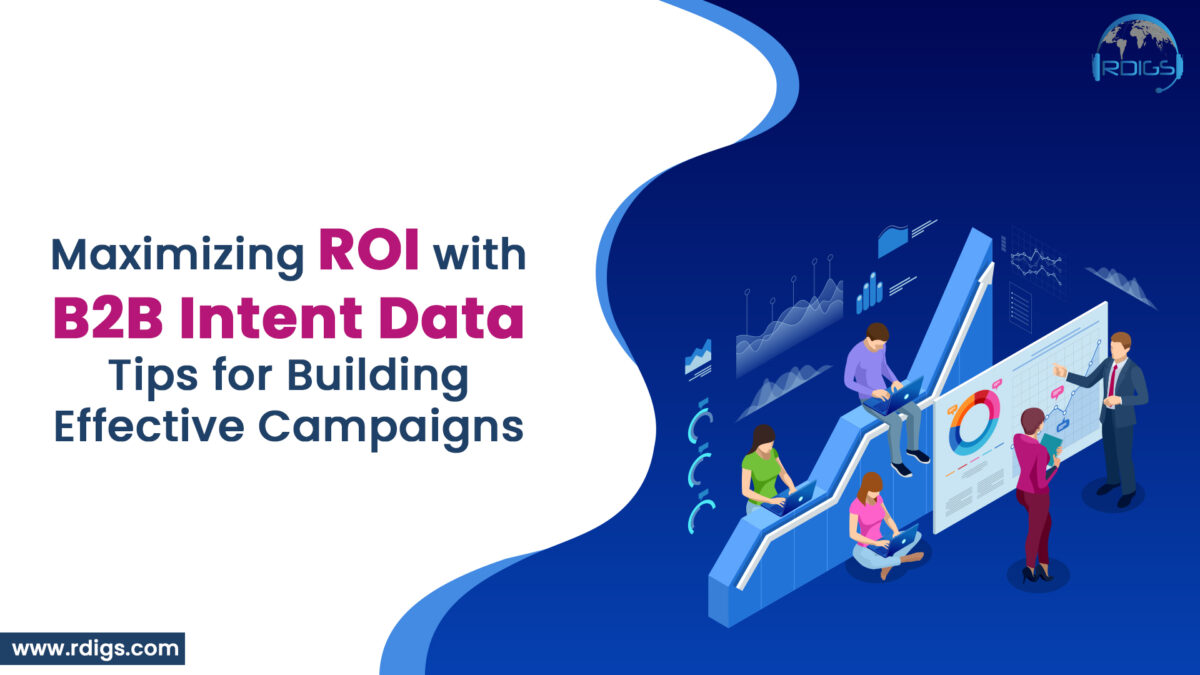Introduction:
As a B2B marketer, achieving maximum return on investment (ROI) is a top priority. The ultimate measure of your success lies in your ability to produce outcomes that fuel the expansion of your enterprise. B2B intent data is a highly effective tool that can aid in achieving your ROI objectives.
B2B intent data is a valuable resource that provides insights into the activities and behaviors of your target audience. This information can be leveraged to gain a deeper understanding of their interests, needs, and intentions. Through a thorough analysis of this data, enterprises can make well-informed decisions and customize their marketing tactics to effectively connect with their potential clients and existing customers.
By utilizing this knowledge, you can construct campaigns that are more impactful and connect with your target audience on a deeper level, resulting in increased engagement rates. Maximizing the potential of B2B intent data is a crucial aspect of modern business strategy. But how can you make the most of B2B intent data?
In the following section, we will explore some valuable insights on how to create impactful campaigns that can optimize your ROI.
Tips for Effective Marketing Campaigns
1) Define your ideal customer profile (ICP): To effectively leverage intent data, it is crucial to have a clear understanding of your ideal customer profile (ICP). This involves defining the characteristics and attributes of your target audience. To begin, it is essential to define your Ideal Customer Profile (ICP). This includes taking into consideration various factors such as the size of the company, industry, job title, and pain points. By identifying your ICP, you can better tailor your marketing efforts and ensure that you are reaching the right audience with the right message. By focusing your efforts on the prospects that are most likely to convert, you can increase your chances of success.
2) Use intent data to identify and prioritize leads: After defining your Ideal Customer Profile (ICP), it is recommended to utilize intent data to pinpoint potential leads who are currently conducting research on solutions within your industry. Prioritizing your outreach efforts and focusing on the prospects with the highest likelihood of converting is made possible through this feature.
3) Build personalized messaging: B2B intent data provides valuable insights into the pain points and needs of your target audience. Utilize the provided data to craft tailored communication that directly addresses the individual’s passions and driving factors.
4) Leverage intent data for account-based marketing (ABM): Account-Based Marketing (ABM) is a specialized B2B marketing strategy that emphasizes personalized outreach to specific accounts instead of relying on general demographic data. Intent data enables you to pinpoint the accounts that are currently conducting research on solutions within your industry. By leveraging this information, you can customize your outreach strategies to effectively engage with these prospects.
5) Measure and analyze campaign performance: In order to optimize your return on investment, it is crucial to thoroughly evaluate and analyze the effectiveness of your marketing campaigns. By utilizing intent data, you can effectively monitor engagement rates, conversion rates, and other significant metrics. This data can be leveraged to refine and enhance your campaigns progressively.
Conclusion
To conclude, B2B intent data helps boost marketing ROI. Follow these steps to produce successful campaigns that expand your business. To reach the right audience, create your Ideal Customer Profile (ICP). Use intent data to rank leads by interest and engagement. Create targeted, customized messaging from there. Use Account-Based Marketing (ABM) to customize your approach. Finally, evaluate your campaign’s results to refine your plan. Follow these steps to design campaigns that boost your business.

